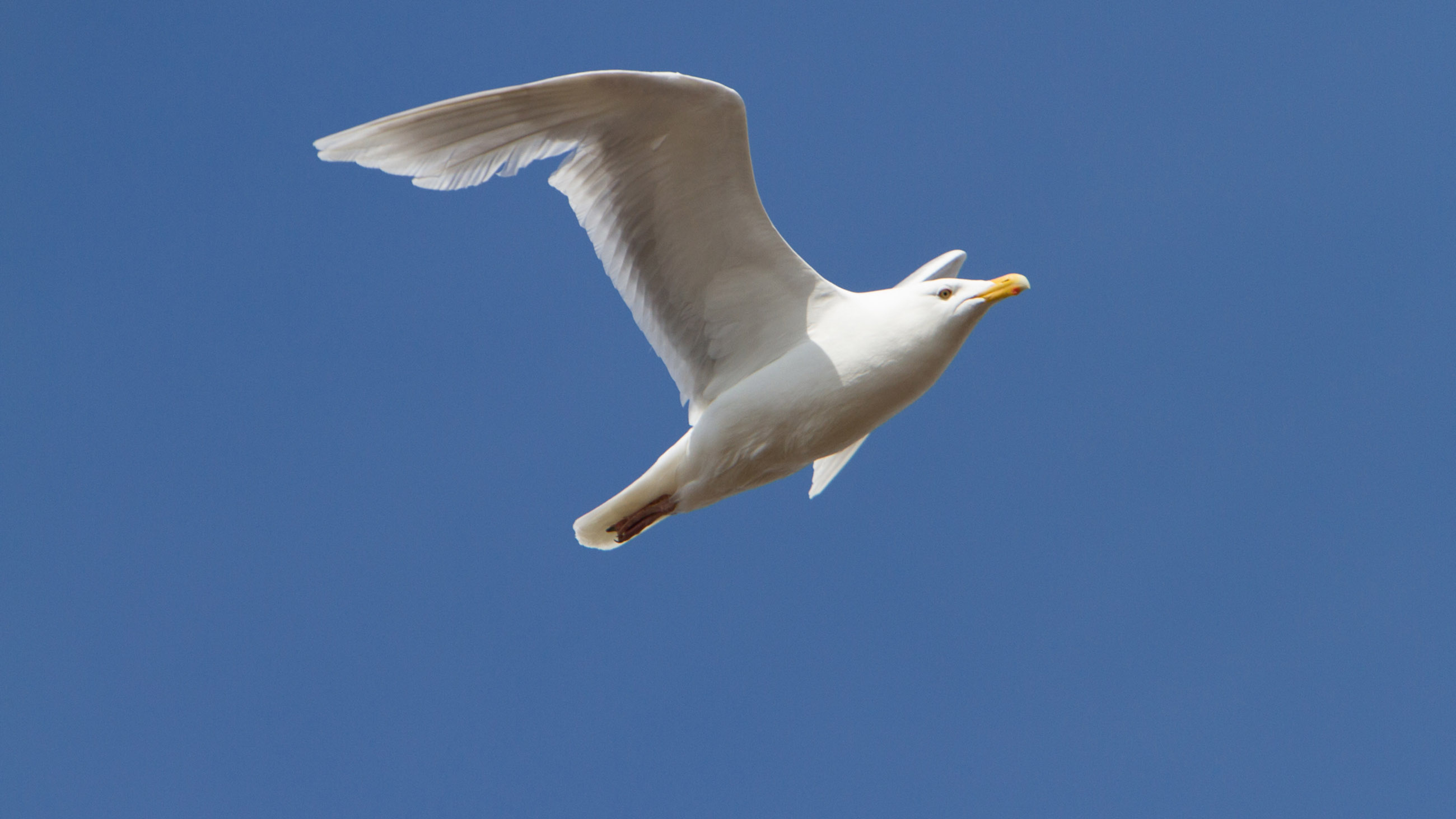Flying In, Flying Away
Through my binoculars, the swirling seabirds were little more than specks. From my vantage atop a promenade in Kotzebue, Alaska, they may as well have been gnats. I couldn’t identify them, and that bothered me. Ten or 15 years ago, I could have listed with some certainty the species that likely constituted the distant flock. Now, not so much. The seabirds of Kotzebue Sound in the Chukchi Sea — and in the whole of the Arctic, for that matter — are changing.

Kotzebue Sound, an arm of the Chukchi, carves a deep chunk out of the northwest coast of Alaska. It’s full of cold, murky water, and for much of the year, ice. The ice there, however — like many places in the Arctic — is thinner and less persistent than it used to be, and its retreat is like the raising of a portcullis. Bird species of the North Atlantic and North Pacific — separated for millennia by a vast, frozen sea too large and bereft of food to cross — now have a sustainable passage between oceans. They are making the crossing with increasing regularity, and they are indicative of unprecedented shifts in the native ecosystem of the Chukchi Sea.
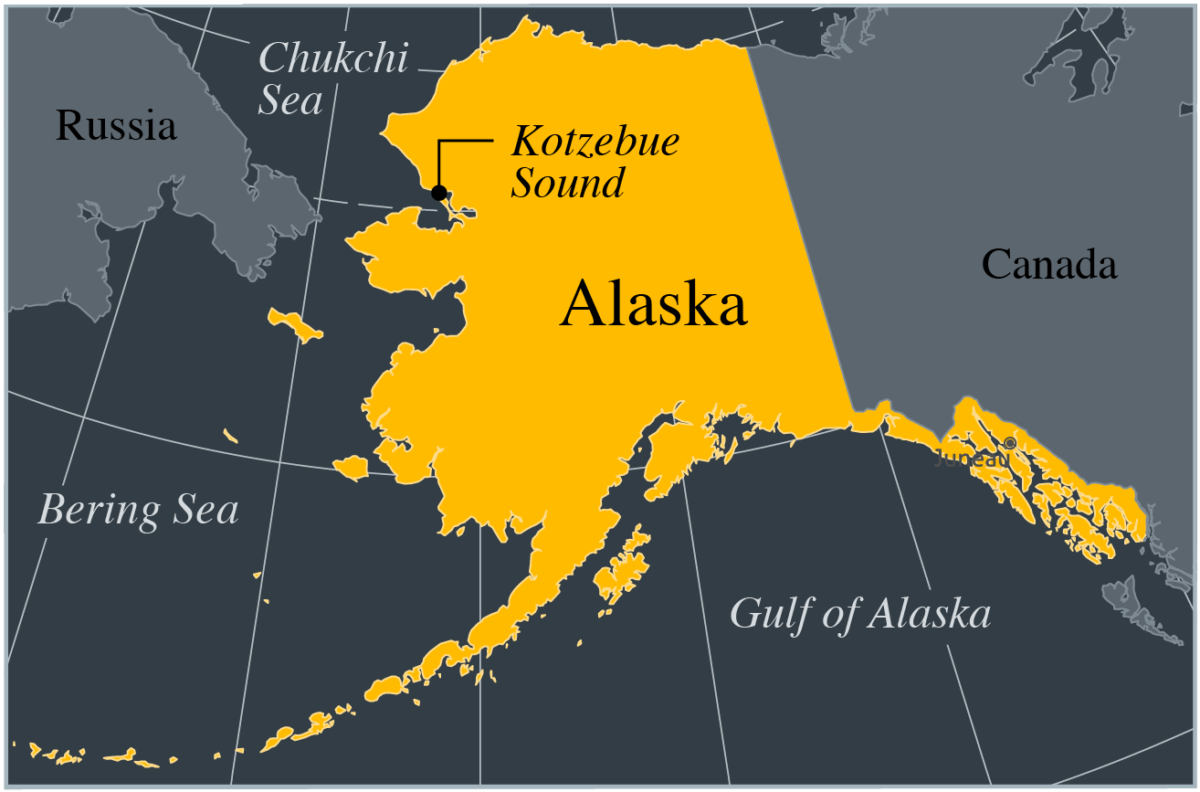
The seabirds of Kotzebue Sound in the Chukchi Sea — in the whole of the Arctic, for that matter — are changing. (Click map to enlarge.)
Visual: Undark
Those changes may seem remote, but they should matter to us all.
Seabird McKeon is a research associate of the Smithsonian’s National Museum of Natural History. He and his co-authors documented the interchange of species across that erstwhile barrier in a 2015 paper published in the journal Global Change Biology. They noted the curious case of a northern gannet, a large, fish-eating bird of the North Atlantic. Gannets are elegant creatures, with black and white plumage and a dagger-bill. They are dramatic hunters, flapping lazily over schools of forage-fish before stopping abruptly and plunging, spear-like, into the water. They are effective predators, and according to McKeon, consume some three pounds of fish per day.
Northern gannets have typically been confined to the Atlantic, but one has recently set up shop on the opposite side of the continent, in California. In McKeon’s paper, he hypothesizes that this bird took advantage of the Arctic thaw and crossed the Northwest Passage, moving south and eventually settling around the islands off California’s coast.
While a single bird poses no great threat to the Arctic, some important questions attach to that wayward gannet: What if that one bird, for example, becomes a trickle or a torrent? Gannets are voracious eaters and aggressive colony-nesters, and an established population in the North Pacific could be devastating for resident birds — and potentially for the fish they consume. What trickle-down effects might a new resident predator have on the enormous fisheries of the Northern Pacific?
The truth is, we don’t know the answers — but I’m getting ahead of myself. There is more to those mystery birds off Kotzebue than possible intruders from the Atlantic.
Adrian Gall is a researcher at ABR Inc., an environmental consulting company in Fairbanks, Alaska. Like McKeon, she has worked in the Chukchi documenting changes in the birds of the Arctic. In a recent issue of the journal Polar Biology, Gall and her co-authors reported on the phenomenon.
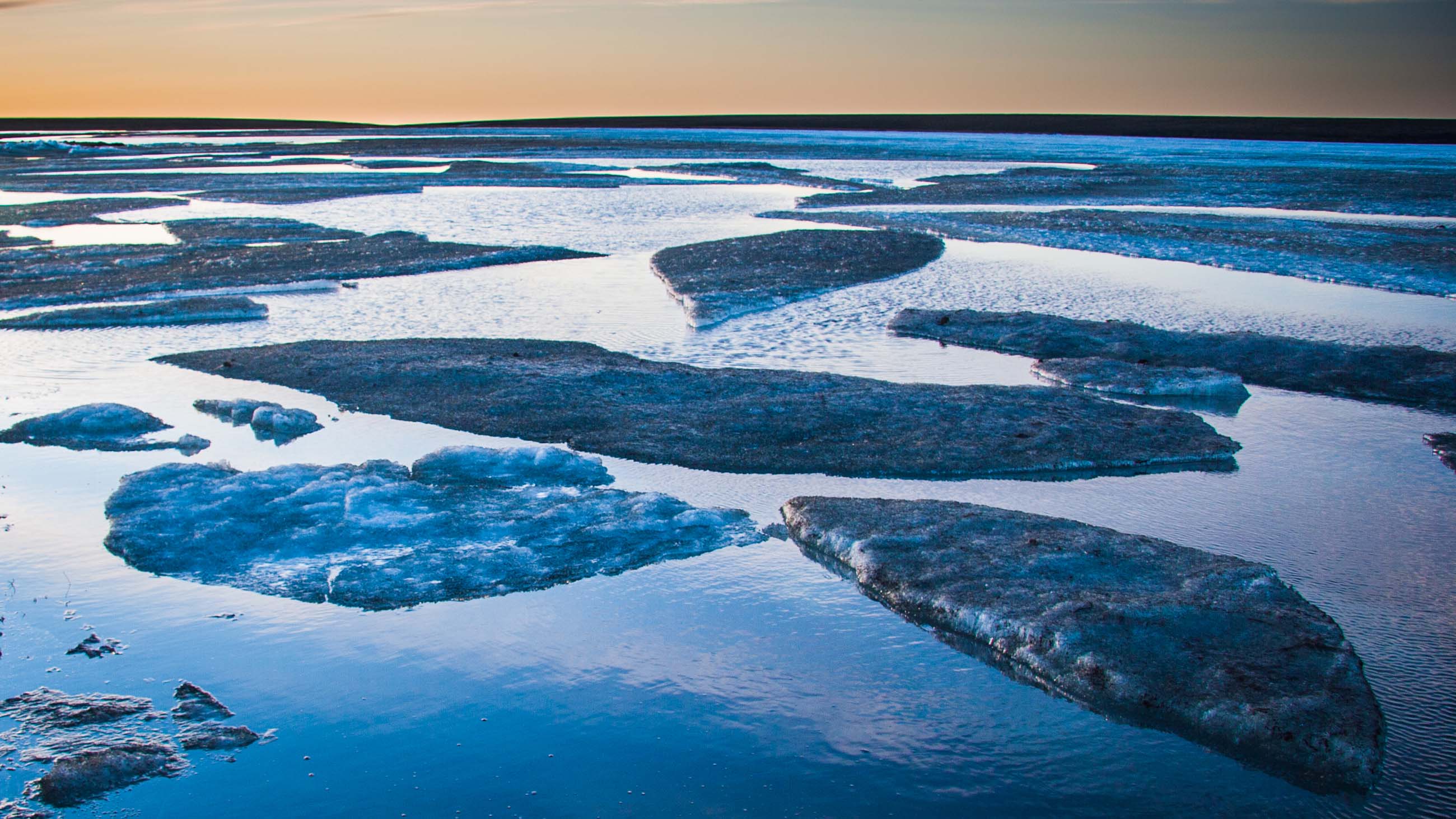
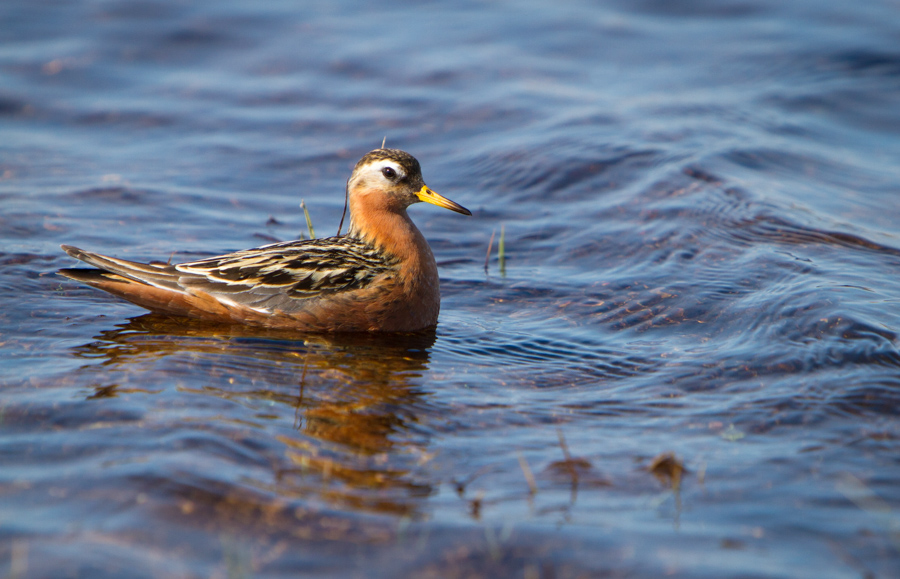
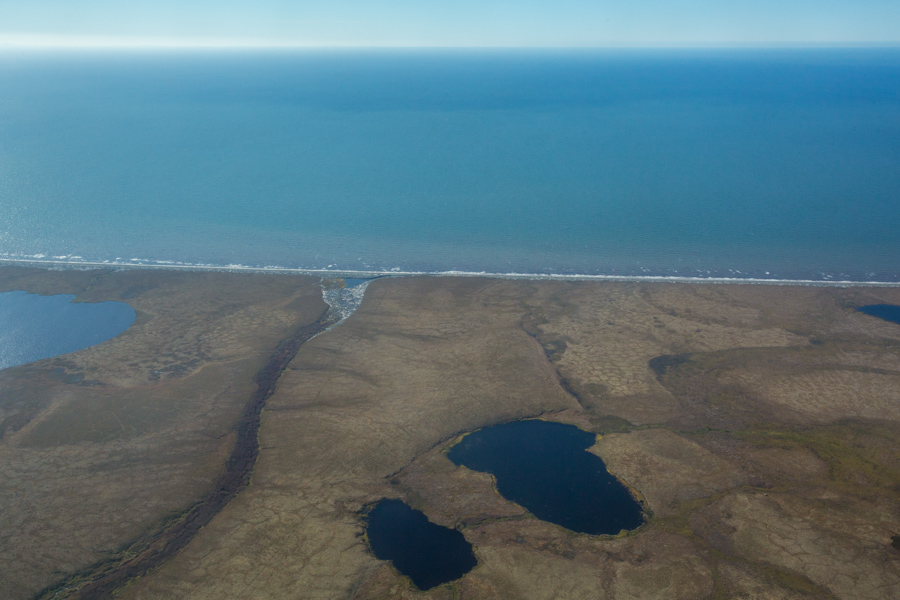
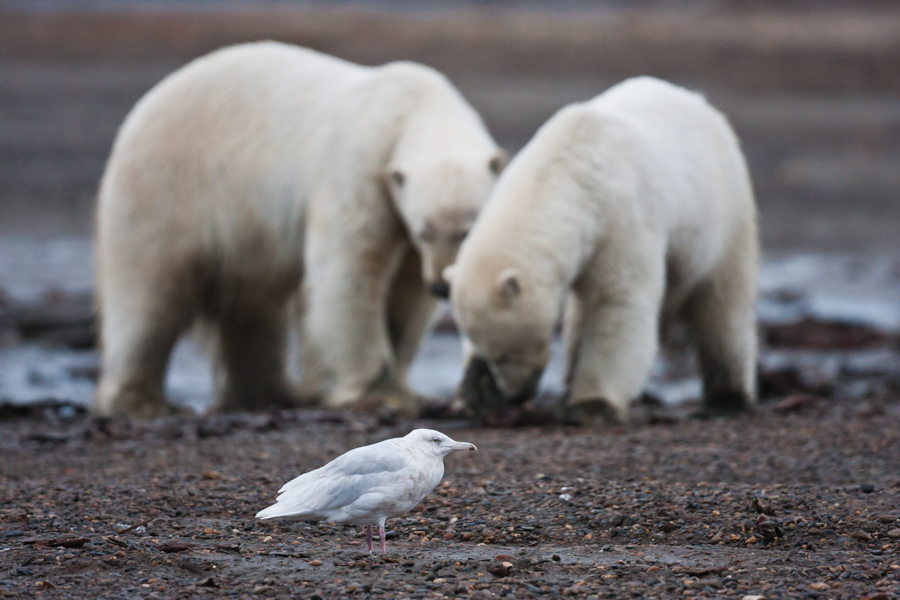
“It’s about ice,” Gall told me over coffee and bagels. Ice, she explained, dictates how nutrients move through the water. Just beneath the sea ice lives a rich layer of algae that shed a steady stream of nutrients down to fish living below. In turn, those small fish disperse and support a community of piscivorous seabirds, like glaucous gulls and black guillemots.
Without the ice, warmer water and increased sunlight provide a habitat for zooplankton. The plankton are of no use to the fish-eating seabirds, but they are eagerly consumed by an entirely different community of birds. In the past several years, birds not normally associated with the open Arctic waters have become commonplace. Species once rare or absent, like ancient murrelets and crested auklets, are now regular visitors. Meanwhile, the fish-dependent species are less abundant in the Chukchi Sea than they used to be.
“The birds are just the most visible symptom of what is happening in the ocean below,” Gall told me. “They reflect changes happening far below the surface.” Changes in the seabird community may be of interest to scientists, birders, and naturalists, but what is happening beneath can have much larger implications.
The shifting ice and the changing ecosystem, for example, are driving walrus and whales elsewhere. This impacts local indigenous communities who depend on sea mammals for their subsistence. And with changes to one ecosystem, the ripples expand outward.
“What happens to the Arctic, happens to the world,” McKeon said. “Events in the north are a precursor to what can, and will, happen elsewhere.” In that sense, the changing Arctic is a frigid canary in a coal mine. Sea and air temperatures are warming faster in the north than in southern latitudes, making for more visible and dramatic changes, but those changes are coming, sooner or later, to the rest of the world’s oceans.
“Understanding the Arctic will help us plan for changes further south,” McKeon said.
And yet, the data collected by Gall, McKeon, and their colleagues provide only murky predictions. The future, like the identity of those birds swirling over Kotzebue Sound, remains frustratingly unclear. It is possible the persistence of cold, dark winters can forestall the ice loss at some middle ground, allowing sufficient habitat for all the Arctic species.
But, if as expected, the region grows warmer with each passing year, the only certainty is that these ecosystem changes will continue. So as we watch the shifting landscape, let us hope that the hard lessons being learned will be applied elsewhere in the world. If not, our chance to act may sink beneath those gray and warming waters.
David Shaw is an Alaska-based writer and photographer specializing in images and text about natural history, travel, and outdoor adventure. His work has appeared in numerous publications, including Sierra magazine, Birdwatcher’s Digest, The Ecologist, and Birds and Blooms.










